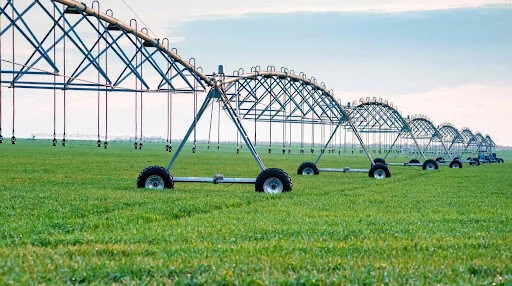In the dynamic landscape of modern agriculture, the integration of technology has become paramount to optimize productivity and resource management. One such technological marvel making waves in the farming sector is irrigation design Software Republic. This cutting-edge tool is transforming traditional irrigation practices, empowering farmers to make informed decisions, conserve water, and maximize crop yields
1: Key Features of Irrigation Design Software:
Hydraulic Modeling:
One of the primary features of irrigation design software is its ability to create hydraulic models. These models simulate the flow of water through the entire irrigation system, allowing farmers to identify potential issues and optimize the layout for maximum efficiency.
Weather Integration:
Modern irrigation design software often integrates real-time weather data. This feature enables farmers to adjust irrigation schedules based on current weather conditions, preventing over-irrigation and reducing water wastage.
Crop-Specific Planning:
Different crops have varying water requirements at different stages of their growth. Irrigation design software takes these factors into account, offering farmers tailored solutions that align with the specific needs of their crops.
2: Benefits of Irrigation Design Software:
Water Conservation:
By precisely calculating water requirements and optimizing irrigation schedules, this software helps farmers conserve water.In an age when water scarcity is a major challenge, sustainable agriculture relies on efficient use of water.
Increased Crop Yields:
The precision offered by irrigation design software translates to improved crop yields.Farmers can enhance the health and productivity of crops by providing the appropriate amount of water at the appropriate time.
Cost Savings:
In spite of allowing the environment, effective utilization of water also helps farmers save the cash. Irrigation design software is ultimately a cost-effective solution because it uses less energy, water, and labor.
3: Challenges and Considerations:
Initial Investment:
While the long-term benefits are evident, the initial investment in irrigation design software and related hardware may pose a challenge for some farmers. However, various government initiatives and support programs are emerging to assist farmers in adopting these technologies.
Training and Adoption:
The successful implementation of irrigation design software requires farmers to undergo training to fully grasp the capabilities of the system. Education and support programs are essential to facilitate a smooth transition and ensure widespread adoption.
4: Future Trends and Developments:
Artificial Intelligence (AI) Integration:
The integration of AI into irrigation design software holds great promise. AI algorithms can continuously learn and adapt to changing conditions, further optimizing irrigation systems and enhancing their predictive capabilities.
Blockchain for Traceability:
The use of blockchain technology can add an extra layer of transparency and traceability to agricultural practices. Farmers can record and verify irrigation data on a secure and immutable ledger, fostering trust among consumers and stakeholders.
Collaborative Platforms:
The development of collaborative platforms that connect farmers, researchers, and technology developers can facilitate the exchange of knowledge and best practices. This collaborative approach can accelerate the evolution of irrigation design software and its adaptation to diverse farming contexts.
Conclusion:
In the agricultural world, irrigation design software is a shining example of innovation, providing game-changing answers to enduring problems. Farmers are going to use this technology more and more as they realize how important it is to use efficient and sustainable irrigation methods. Farmers can use irrigation design software to boost profitability and productivity while also building a more resilient and sustainable agricultural industry.









